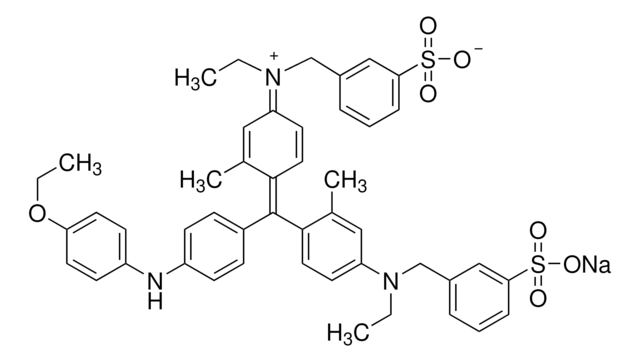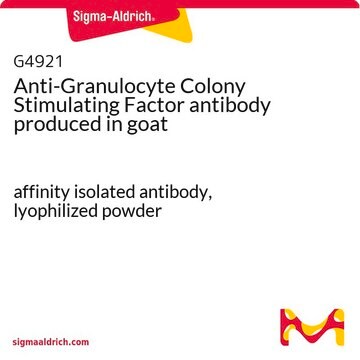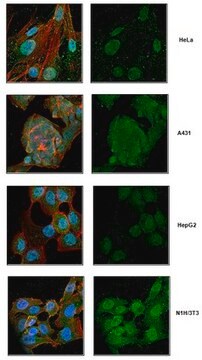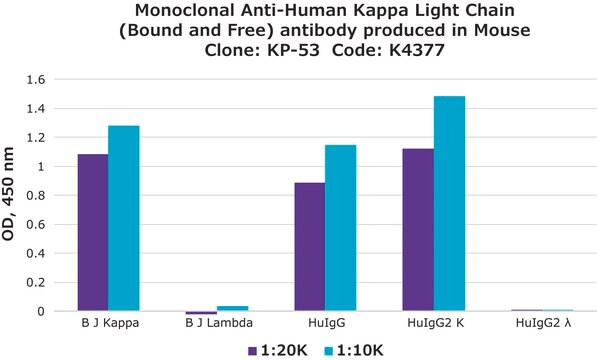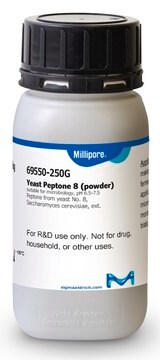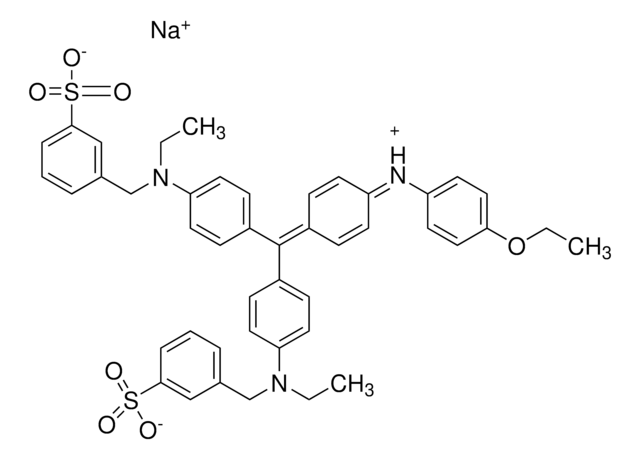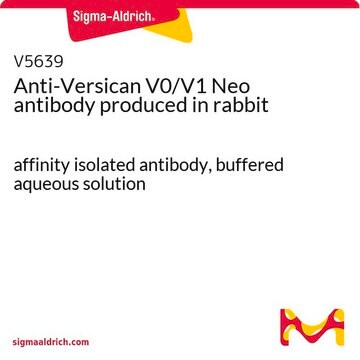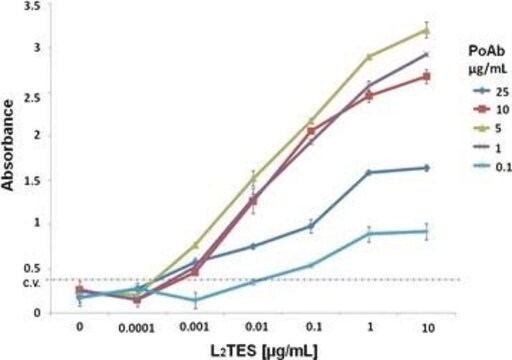G1029
Monoclonal Anti-Granulocyte Colony Stimulating Factor antibody produced in mouse
clone 3316.111, purified immunoglobulin, lyophilized powder
Sinonimo/i:
Anti-G-CSF
Autenticatiper visualizzare i prezzi riservati alla tua organizzazione & contrattuali
About This Item
Prodotti consigliati
Origine biologica
mouse
Livello qualitativo
Coniugato
unconjugated
Forma dell’anticorpo
purified immunoglobulin
Tipo di anticorpo
primary antibodies
Clone
3316.111, monoclonal
Stato
lyophilized powder
Reattività contro le specie
human
tecniche
capture ELISA: suitable
neutralization: suitable
Isotipo
IgG1
N° accesso UniProt
Temperatura di conservazione
−20°C
modifica post-traduzionali bersaglio
unmodified
Informazioni sul gene
human ... CSF3(1440)
Categorie correlate
Immunogeno
recombinant human granulocyte colony stimulating factor.
Azioni biochim/fisiol
Mature myeloid cells are derived from bone-marrow derived precursor cells by the activity of three colony stimulating factors, granulocyte/macrophage colony-stimulating factor (GM-CSF), macrophage colony-stimulating factor (M-CSF) and granulocyte colony-stimulating factor (G-CSF). The expression of G-CSF is the result of activation of pathways in response to tumor necrosis factor-α, LPS and toll-like receptor ligands. The main functions of G-CSF include the generation of neutrophils and induction of the circulation of hematopoietic stem cells from the bone marrow.
Stato fisico
Lyophilized from a 0.2 μm filtered solution in phosphate buffered saline containing carbohydrates.
Nota sulla preparazione
Purified using protein G.
Esclusione di responsabilità
Unless otherwise stated in our catalog or other company documentation accompanying the product(s), our products are intended for research use only and are not to be used for any other purpose, which includes but is not limited to, unauthorized commercial uses, in vitro diagnostic uses, ex vivo or in vivo therapeutic uses or any type of consumption or application to humans or animals.
Non trovi il prodotto giusto?
Prova il nostro Motore di ricerca dei prodotti.
Prodotti correlati
N° Catalogo
Descrizione
Determinazione del prezzo
Codice della classe di stoccaggio
10 - Combustible liquids
Classe di pericolosità dell'acqua (WGK)
WGK 3
Punto d’infiammabilità (°F)
Not applicable
Punto d’infiammabilità (°C)
Not applicable
Scegli una delle versioni più recenti:
Possiedi già questo prodotto?
I documenti relativi ai prodotti acquistati recentemente sono disponibili nell’Archivio dei documenti.
H Nagata et al.
The American journal of physiology, 271(6 Pt 1), G1028-G1033 (1996-12-01)
Topical application of ethanol to the gastrointestinal mucosa induces vasodilation. Using an in vivo microscopy technique, we studied the effect of topical ethanol on the submucosal microvessels that control mucosal blood flow in the rat stomach and identified vasoactive substances
R R Ji et al.
Nature neuroscience, 2(12), 1114-1119 (1999-11-26)
We investigated the involvement of extracellular signal-regulated protein kinases (ERK) within spinal neurons in producing pain hypersensitivity. Within a minute of an intense noxious peripheral or C-fiber electrical stimulus, many phosphoERK-positive neurons were observed, most predominantly in lamina I and
Sebastian Stösser et al.
Journal of molecular medicine (Berlin, Germany), 89(4), 321-329 (2010-11-17)
A variety of cancers are accompanied by debilitating pain, which constitutes the primary reason for poor quality of life in cancer patients. There is an urgent demand for the development of specific mechanism-based therapies against cancer pain. Recently, important advances
Sophie Pezet et al.
The European journal of neuroscience, 21(7), 1785-1797 (2005-05-05)
The serine/threonine kinase Akt/PKB has been implicated in cell survival signalling in many cell types, including the dorsal root ganglion (DRG). However, little is known about its role in physiological and pathophysiological conditions in the adult sensory and nociceptive system.
Rong L He et al.
Blood, 113(2), 429-437 (2008-10-28)
The acute-phase protein serum amyloid A (SAA) is commonly considered a marker for inflammatory diseases; however, its precise role in inflammation and infection, which often result in neutrophilia, remains ambiguous. In this study, we demonstrate that SAA is a potent
Il team dei nostri ricercatori vanta grande esperienza in tutte le aree della ricerca quali Life Science, scienza dei materiali, sintesi chimica, cromatografia, discipline analitiche, ecc..
Contatta l'Assistenza Tecnica.